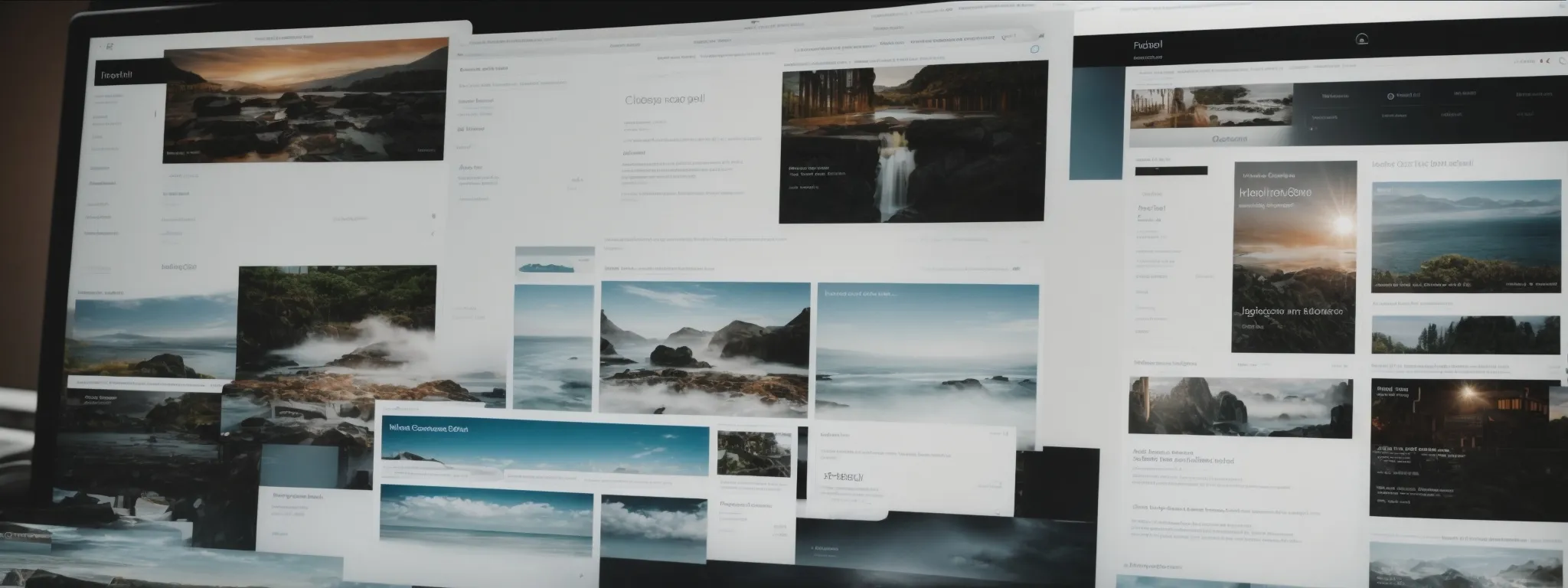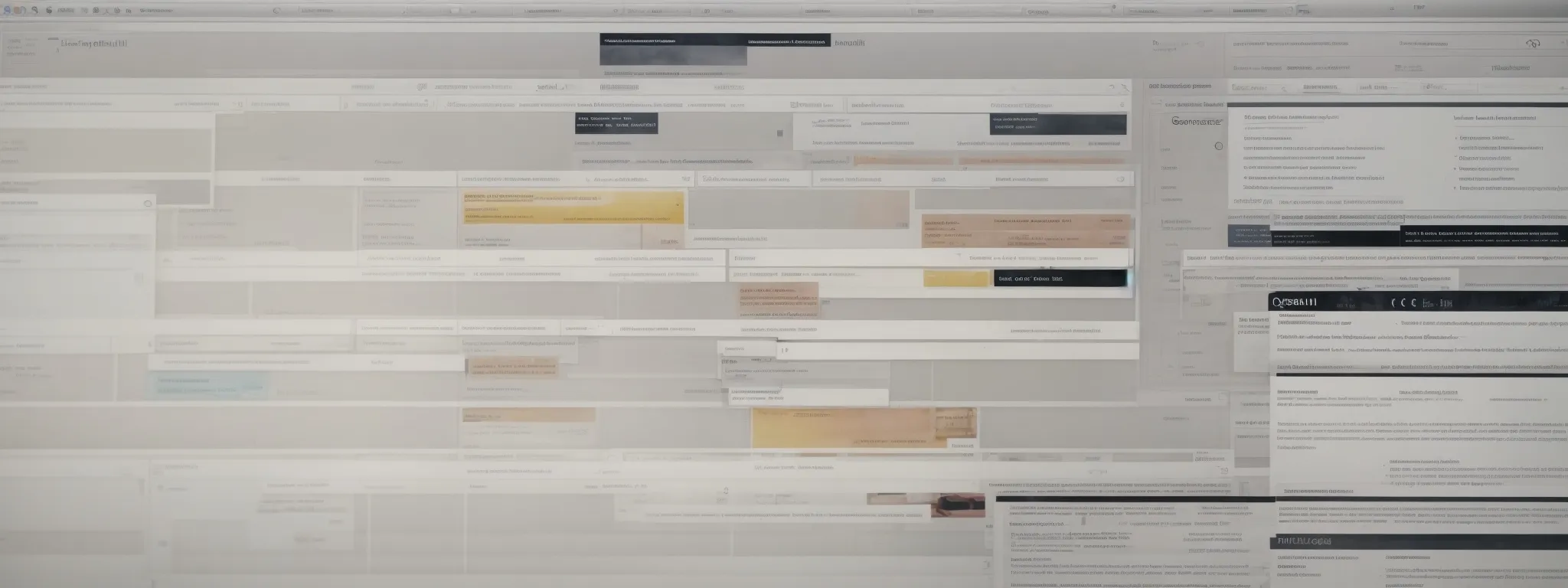Crafting SEO-Friendly URLs
The Art of Crafting SEO-Friendly URLs In the intricate dance of search engine optimization, SEO-friendly URLs emerge as pivotal steps. Mastering the art of URL creation not […]
The Art of Crafting SEO-Friendly URLs
In the intricate dance of search engine optimization, SEO-friendly URLs emerge as pivotal steps.
Mastering the art of URL creation not only ensures search engines can traverse and comprehend a site’s structure seamlessly but also enhances a user’s navigation experience.
Effective URLs act as signposts that guide both search engine bots and human visitors through the wealth of information a site has to offer, making them essential for bolstering SEO performance and optimizing web presence.
This article illuminates the foundational principles and practical techniques to sculpt URLs that resonate with search algorithms and users alike.
Keep reading for a comprehensive exploration of SEO-friendly slug creation that could transform your site’s search engine ranking trajectory.
Key Takeaways
- Proper URL Structure Enhances Both User Experience and SEO Performance
- Strategic Keyword Placement in URLs Aligns With User Search Intent and Improves Search Rankings
- URL Redirects, When Managed Appropriately, Preserve Link Equity and Maintain a Website’s SEO Health
- Mobile-Friendly and Secure (HTTPS) URL Practices Are Essential for Modern SEO and User Trust
- Clear URL Hierarchy and Breadcrumb Integration Facilitate User Navigation and Boost Search Indexing
Understanding the Essentials of SEO-Friendly URLs

Navigating the intricate framework of Search Engine Optimization necessitates a keen understanding of the myriad elements that jointly propel a website up the search engine ranks, and the art of crafting SEO-friendly URLs remains a pivotal aspect of this ensemble.
URLs serve not simply as web addresses but as indispensable components that influence user experience, search engine bot comprehension, and ultimately, the positioning within search engine result pages.
Structurally sound URLs, punctuated by clarity and relevance, inform both the user and the search engine of the page content, and as such, establish the foundation for effective SEO performance.
Exhibiting examples of well-constructed URLs provides website owners and companies with a blueprint for optimizing their own digital pathways to enhance search visibility and user engagement.
Defining the Role of URLs in SEO
At the nexus between a visitor’s interaction and the search engine’s evaluation lies the URL—an ostensibly modest, yet profoundly impactful string of characters in the SEO equation. A carefully structured URL delivers clear signals to search engines, ensuring that the content’s relevance resonates with targeted search queries and promoting a higher rank on the search engine result pages (SERPs).
By adhering to SEO Best Practices, a URL enhances a website’s architecture and earns favor with algorithms, refining the user’s search experience and augmenting a website’s authority through greater search visibility. For company websites, brand recognition is bolstered when users can easily recall and share clean and descriptive URLs that align cohesively with page titles and content.
The Impact of Structure on Search Rankings
The structure of a URL holds significant sway over search rankings, as it is one of the first elements that search engine algorithms evaluate. URLs that are concise, well-organized, and include target keywords facilitate search engines in ascertaining the relevance and value of the page content, thus influencing the website’s search engine ranking positively.
Strategic use of subfolders and hyphens, rather than underscores or lengthy URL parameters, can determine how search engine bots perceive the hierarchy and context of website content. Recognition of this structural precision by search engines contributes to a stronger page rank: an essential goal for any astute website owner and SEO strategist.
- URLs with strategically placed keywords aid the clarity for search engine bots, heightening the relevance of page content to specific search queries.
- Utilizing hyphens instead of underscores, keeping URL length to a minimum, and opting for a logical use of subdirectories improves the URL’s readability and SEO potency.
Examples of Well-Constructed URLs
Observing well-constructed URLs is instructive: they often feature a clean, logical structure that includes a readable string of words separated by hyphens. Insightful selection and placement of keywords within the URL ensures it is not just a passive locator but an active participant in the site’s SEO narrative.
Take for example a URL that reads ‘www.example.com/services/seo-content-strategy’. It immediately conveys the page’s subject matter to both user and search engine, indicating a clear categorical hierarchy from ‘services’ to ‘seo-content-strategy’, thereby amplifying its relevance for pertinent search queries.
| Element | Description | Example |
|---|---|---|
| Protocol | The foundational web transfer protocol | http:// or https:// |
| Domain Name | The identity of the website and its brand | www.example.com |
| Category Name | A primary directory that indicates a scope of content or service | /services/ |
| Target Keyword | The specific SEO focus that also serves as the page title | /seo-content-strategy |
This seamless structure is not by mere coincidence but by design, and LinkGraph’s SEO services hone the specifics of such URL elements. The company’s expertise ensures that, from protocol to target keyword, every segment of the URL aligns with overarching SEO content strategies and business objectives, favorably impacting SEO performance and user experience.
Best Practices for Creating Effective URLs

In the realm of Search Engine Optimization, the subtle nuances of a URL can significantly dictate the trajectory of a webpage’s visibility and user engagement.
With the aim of optimizing for both search engines and human users, industry leaders must focus on meticulously sculpting their URLs.
This involves employing short, descriptive slugs that encapsulate the essence of the webpage, utilizing keywords that are strategically woven into the URL to resonate with targeted search intents, and sidestepping the pitfalls of superfluous parameters that might convolute a URL’s message and impair its SEO efficacy.
The subsequent discussion will delve into the importance of these practices, shedding light on how they converge into a cohesive strategy for crafting URLs that serve as beacons for search engine bots and a clear path for users seeking information.
Employing Short and Descriptive Slugs
In the artistry of SEO, brevity paired with clarity reigns supreme in URL slugs. SEO specialists at LinkGraph consistently advocate for succinctness in URL construction, where each word holds deliberate purpose, directly reflecting the theme and substance of the webpage.
This adherence to conciseness not only sharpens the focus for search engine algorithms but also furnishes users with an immediate comprehension of what to expect from the webpage content, thus enriching user experience and supporting strategic SEO objectives.
Utilizing Keywords Strategically
Incorporating keywords into URLs is not about mere inclusion; it requires strategic placement to signal to search engines the main focus of the web page. LinkGraph experts optimize this process, ensuring that selected keywords are positioned to enhance relevance to the subject matter, and correspond adeptly with user search behavior to bolster search rankings.
LinkGraph’s mastery in selecting the right keywords goes beyond basic SEO; it involves comprehensive analysis and application of terms that serve as potent indicators of the content’s intent and audience alignment. Precise keyword usage in URLs complements on-page SEO services, creating a coherent theme that search engines reward with higher visibility in search results.
Avoiding the Use of Unnecessary Parameters
Streamlining the URL by omitting superfluous parameters is a strategic move that can significantly refine the site’s SEO standing. Unnecessary URL parameters often lead to convoluted addresses that impede search engine bots’ capacity to index pages efficiently, an aspect that LinkGraph meticulously addresses with its SEO services.
LinkGraph’s expertise in enhancing URL efficiency extends to the removal of dynamic parameters that might create duplicate content issues, thus promoting a cleaner, more navigable URL structure. This streamlined approach reinforces the website’s SEO framework, ensuring that each URL distinctly contributes to the site’s coherent search engine narrative.
Step-by-Step Guide to Crafting SEO-Friendly Slugs

Embarking on the journey of Improving Search Engine Rankings necessitates a keen focus on URL optimization—where the synthesis of clarity, conciseness, and keyword relevance becomes paramount.
Harmonizing the elements of a transparent page title, a simplified URL structure, and the strategic integration of target keywords is nothing short of crafting a digital fingerprint, each uniquely tailored to etch a prominent mark on the search landscape.
It is within these refined details that the prowess of LinkGraph’s SEO services shines, lifting the veil on the nuances of creating SEO-friendly slugs that not only resonate with search engine algorithms but also cater to the navigational preferences of users.
Starting With a Clear Page Title
A clear page title serves as the cornerstone of Creating SEO-friendly URLs; it sets the stage for the ensuing narrative that unfolds on the webpage. Through this initiative, LinkGraph’s SEO services emphasize transparency, allowing ease of navigation for users and straightforward indexing for search engine bots, ensuring that a website’s content is effortlessly decipherable and effortlessly accessible on SERPs.
LinkGraph’s approach to page titles involves meticulous curation, ensuring that each title resonates with the content’s core subject while simultaneously reflecting the target keywords important for search engine ranking. This careful synchronization results in URLs that are not just directions to a webpage, but powerful assets that enhance the page’s relevance in response to specific user queries.
Simplifying Your URLs for Better SEO
To truly harness the power of URL optimization, refinement is essential. This lean approach favored by LinkGraph’s SEO services means distilling the essence of each webpage into a URL as streamlined as the user’s path to finding it: direct and unobstructed. It’s about enhancing SEO by ensuring that every URL is an intuitive guide to the content within, devoid of complexity that could diffuse the focus of both user and search engine.
- LinkGraph’s SEO strategy involves stripping URLs to their bare necessities, omitting any characters that don’t serve a clear purpose.
- Through the elimination of unwieldy URL parameters, LinkGraph creates cleaner, more compelling pathways conducive to improved SEO outcomes.
- With each concise URL, user experience is enriched, fostering a client’s digital presence with greater clarity and impact.
LinkGraph advocates for an elegant simplicity in URL structure, leading to better decipherability and search engine affinity. Removing redundant or irrelevant words, refining the usage of categories, and ensuring the inclusion of potent, relevant keywords culminates in a URL poised for optimal search engine performance. The precision of this process mirrors the meticulousness of a sculptor: each curve and contour is intentional, serving the dual purpose of aesthetic appeal and deliberate storytelling.
Incorporating Target Keywords
Incorporating target keywords within URLs is a surgical affair: each term is delicately chosen and placed to not only define the page’s content but to echo the search terms users employ. Through LinkGraph’s expert SEO services, the inclusion of these keywords is optimized to ensure they naturally fit within the URL, acting as signposts that guide search engines towards the page’s relevance and context.
LinkGraph’s precision in embedding target keywords fulfills a double-edged objective: enhancing the page’s discoverability while fostering an intuitive user experience. Keywords are strategically positioned within the URL to align with the user’s search intent, guaranteeing that the page surfaces prominently when those specific terms are queried:
- Analyzing the most valuable keywords with high relevance to the page content.
- Ensuring the keywords are seamlessly woven into the URL structure.
- Refining keyword placement to reflect user search patterns and behaviors.
Technical Aspects of SEO-Friendly URL Optimization

The technical landscape of crafting SEO-friendly URLs extends beyond mere aesthetics and keyword placement; it underpins the security and accessibility of a site’s digital presence.
Ensuring that a site’s URLs are mobile-friendly is not just a nod to the upward trend of on-the-go browsing—it’s a fundamental consideration for maintaining search engine favor.
Similarly, the transition to HTTPS goes beyond the padlock symbol in the address bar; it’s a commitment to secure data transfer, thus fortifying the trust of visitors and search engines alike.
Moreover, managing URL redirects with precision ensures navigational continuity—a testament to a site’s structural integrity.
By tackling these technical elements, LinkGraph’s SEO services fortify the underlying scaffold that supports a high-performing, trusted online entity.
Ensuring Mobile-Friendliness in URL Design
As the digital landscape becomes increasingly mobile-centric, URL design must cater to the user on-the-move. Acknowledging this shift, LinkGraph’s SEO services emphasize the importance of mobile-friendly URL structures, which are pivotal for ensuring accessibility and enhancing user experience on smaller screens.
URLs optimized for mobile devices facilitate easier navigation and sharing, a detail that LinkGraph meticulously integrates into their comprehensive SEO strategies. Clear, concise, and easily clickable URLs underscore the commitment to mobile optimization, fostering seamless interaction regardless of the user’s device:
| Aspect | Mobile-Friendly Optimization | SEO Benefit |
|---|---|---|
| URL Length | Short to ensure easy typing and recall | Enhanced User Interaction |
| Clickability | Sufficient spacing for touchscreens | Improved Navigation |
| Keyword Placement | Strategic and discernible | Higher Mobile Search Ranking |
This tailored approach enables URLs to perform optimally across various platforms, reflecting the seamless versatility that modern users expect. LinkGraph’s adeptness in crafting mobile-optimized URLs results in improved site traffic and user engagement, key indicators of successful SEO integration.
Utilizing HTTPS for Secure URLs
Securing a web presence extends beyond mere content creation; it entails instilling trust through the adoption of secure transfer protocols. LinkGraph’s SEO services prioritize the Utilization of HTTPS in URL structures, acknowledging the protocol’s role not only in safeguarding user data but also in elevating a site’s credibility and search engine rankings.
Integrating HTTPS is a clear signal to users and search engines that a website is committed to security, an attribute increasingly regarded as a ranking factor. Through LinkGraph’s comprehensive approach to SEO, HTTPS becomes a cornerstone of URL optimization, fostering a trustworthy environment conducive to superior SEO performance and user confidence.
Managing URL Redirects Properly
Managing URL redirects with precision is a critical component of maintaining a site’s SEO health. Effective redirection ensures users and search engines experience a flawless transition from old to new URLs, a factor that preserves link equity and sustains organic rankings.
LinkGraph’s SEO services provide expert management of 301 redirects, the permanent forwarding from one URL to another, which not only maintains existing traffic but also signals search engines to transfer prior indexing properties to the new URL. URL redirects, when executed appropriately, mitigate the risks of broken links and their potential detrimental impact on SEO:
| Action | SEO Implication | User Experience Effect |
|---|---|---|
| Implement 301 Redirects | Preservation of Link Equity | Seamless Navigation to Relevant Content |
| Avoid Redirect Chains | Optimizes Page Load Speed for SEO | Enhances Website Responsiveness |
| Update Internal Links Post-Redirect | Ensures Accurate Link Authority Distribution | Prevents User Frustration from Redirect Loops |
Moreover, LinkGraph implements a meticulous review process to update all internal links, effectively Eliminating Redundant Redirects. This strategy optimizes the site’s link structure, further solidifying the foundation for improved search engine discovery and user satisfaction.
Understanding URL Hierarchy and Its SEO Benefits

Within the arena of search engine optimization, the structural elegance of a URL speaks volumes about a site’s organization and its strategic approach to digital presence.
It is through the meticulous crafting of hierarchical URLs that a business delineates the depth and breadth of its content offerings.
URLs fashioned to mirror site hierarchy not only simplify navigation for users but also serve as clear, indexed pathways for search engine bots, enhancing a site’s SEO prowess.
Encompassing methods such as breadcrumb trails and logical content categorization, this practice provides a clear roadmap much appreciated by users and search engines alike.
Thus, the architecture of a website’s URL becomes an essential cog in the machinery of SEO, underpinning the navigational experience and strengthening the site’s visibility across the digital expanse.
Structuring URLs to Reflect Site Hierarchy
URL hierarchy is an integral component in the grand scheme of SEO, acting as a beacon for search engines to discern the structure of a website. A meticulously delineated URL hierarchy echoes the logical architecture of a site, enabling search engines to efficiently index content, leading to improved rankings and user navigation.
LinkGraph’s SEO services skillfully Optimize URL Hierarchy, ensuring that each URL segment contributes to a coherent narrative about the site’s content organization. This clear, hierarchical structuring enhances a website’s user experience and search engine discoverability, positioning the site for greater prominence in search results.
The Role of Breadcrumbs in URL Optimization
In the interdisciplinary dance of SEO, breadcrumbs play a pivotal role, deftly indicating the depth and precision of a site’s content structure to both users and search engines. Breadcrumbs reflect a site’s architecture within the URL, offering clear pathways back to previous sections, which search engines reward with better indexing and users with enhanced navigability.
Breadcrumbs provide an audit trail, guiding visitors through a website’s hierarchy without overwhelming them with complex navigation choices. Properly integrated into a URL, they effortlessly delineate the content’s context within the broader website structure, optimizing the user experience and signaling the page’s relevance to search engines:
| Hierarchy Level | Role in Breadcrumbs | SEO Benefit |
|---|---|---|
| Home | Starting point, anchors user orientation | Defines site’s root, enhances indexation |
| Category | Clarifies the sectional focus within the site | Strengthens thematic relevance, aids ranking |
| Subcategory/Product Page | Navigational endpoint, reflective of user’s journey | Boosts content specificity, targets long-tail queries |
This structured approach to URL optimization, infused with breadcrumbs, accentuates a website’s organization, promoting search engine comprehension and fostering a frictionless user experience. By leveraging this component of URL optimization, LinkGraph’s SEO services amplify a site’s clarity, allowing for an intricately mapped digital experience aligned with strategic SEO objectives.
Categorizing Content Through URL Segmentation
Segmentation within URL structures emerges as a silent yet potent orchestrator of content categorization, subtly revealing to users and search engines the precise nature and placement of a website’s offerings. Adopting this systematic approach, LinkGraph tailors URLs to establish clear divisions among content, enhancing the coherence of on-site navigation and illuminating a site’s architecture, thereby resonating with search engine algorithms’ preference for well-organized information.
LinkGraph’s deft implementation of Content Categorization Through URL Segmentation presents each web address as a transparent and well-defined map, guiding visitors through the depth of a website’s resources. This precision in segmentation, by distinguishing between various content layers, bolsters the granularity with which search engines can assess relevance, aiding the ascension of web pages in the rankings and satisfying the information-seeking behavior of users.
Avoiding Common SEO URL Mistakes

In the meticulous world of SEO, successful navigation through the digital landscape demands an acute awareness of the pitfalls that can derail an optimized URL structure.
Foremost among the challenges that industry professionals encounter are the inevitable broken URLs, which disrupt user experience, duplicate content issues that can confound search engines, and the delicate task of updating URLs in a manner that preserves their accrued SEO value.
An understanding of these common missteps, coupled with a strategic approach to correct them, is essential for maintaining both the integrity of a website’s architecture and its standing in the ever-competitive SERPs.
Identifying and Fixing Broken URLs
Unraveling the conundrum of broken URLs begins with vigilant monitoring, a process LinkGraph’s SEO services perform with unwavering precision. Identifying these disruptions involves a thorough scan of the website, employing advanced tools to detect and address dead links that could otherwise undermine SEO efforts and obstruct the user’s journey.
Upon detection, LinkGraph swiftly orchestrates the repair of broken URLs, implementing steadfast 301 redirects to maintain link equity and search rankings. Their systematic approach ensures a restoration of the pathway, recalibrating the user’s experience to one of seamless navigation and uninterrupted access to the intended content.
Steering Clear of Duplicate Content Issues
To effectively sidestep the pitfalls of duplicate content within URLs, diligent mapping of each unique web address is paramount. LinkGraph’s SEO services meticulously ensure that content variants, such as print versions or user sessions, do not result in URL permutations that inadvertently compete for search engine attention.
LinkGraph actualizes this endeavor through the strategic application of canonical tags, signposting the preferred URL for indexing. This eliminates redundancy in search results, an essential step in preserving the integrity of search engine rankings and fortifying a site’s SEO foundation.
Updating URLs Without Losing SEO Value
The task of updating URLs is fraught with the risk of disrupting a website’s accrued search equity. However, LinkGraph’s SEO services adeptly navigate this process, ensuring that strategic redirection preserves the website’s search authority while fostering enhancements in structure and relevance.
This transition phase is meticulously planned by LinkGraph experts to prevent any negative impact on SEO value:
- Thorough pre-update analysis to understand the potential influence on search rankings.
- Employment of 301 redirects to signal both users and search engines of the change, allowing for the transference of established SEO value to the updated URL.
- Continual monitoring post-update to gauge the impact on traffic and rankings, ensuring a smooth transition maintains the SEO stature of the webpage.
Thus, transformation of URLs becomes a seamless operation within the digital domain, safeguarded against the erosion of hard-won search engine standing.
Conclusion
In conclusion, mastering the art of crafting SEO-friendly URLs is an indispensable skill for enhancing a website’s search visibility and user engagement.
Structuring URLs that are concise, logical, and include targeted keywords helps to clearly communicate the content of a page to both users and search engines, thereby improving the site’s rankings on SERPs.
Best practices such as using short, descriptive slugs, strategically placing keywords, and avoiding unnecessary parameters, contribute to creating URLs that are not only clear and memorable but also efficient in conveying relevance and authority.
Moreover, technical considerations, like ensuring mobile-friendliness, using HTTPS, and managing redirects correctly, further secure a website’s SEO positioning.
By diligently constructing URLs that reflect the site’s hierarchy and content organization, businesses can avoid common SEO pitfalls and maintain the integrity of their online presence.
Implementing the nuanced strategies provided by SEO services like LinkGraph ensures that each URL is a strategic asset, adeptly contributing to a robust and effective SEO framework.














































































